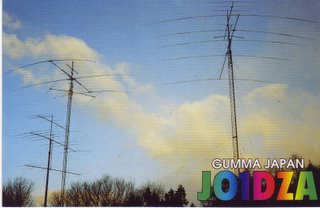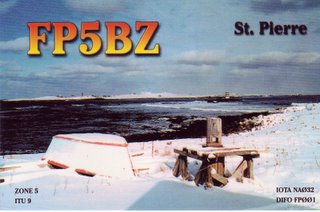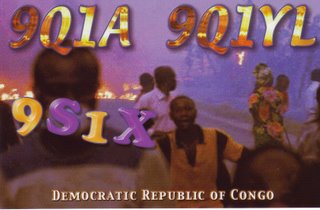Friday, December 30, 2005
Thursday, December 29, 2005
Cabo Verde

Cape Verde
Geographic coordinates: 16 00 N, 24 00 W
Area: 4,033 sq km
Coastline: 965 km
Maritime claims: measured from claimed archipelagic baselines
Climate: temperate; warm, dry summer; precipitation meager and very erratic
Terrain: steep, rugged, rocky, volcanic
Elevation extremes: lowest point: Atlantic Ocean 0 m highest point: Mt. Fogo 2,829 m (a volcano on Fogo Island) Natural resources: salt, basalt rock, pozzuolana (a siliceous volcanic ash used to produce hydraulic cement), limestone, kaolin, fish Population: 405,163 (July 2001 est.) Ethnic groups: Creole (mulatto) 71%, African 28%, European 1%
Languages: Portuguese, Crioulo (a blend of Portuguese and West African words)
The uninhabited islands were discovered and colonized by the Portuguese in the 15th century; they subsequently became a trading center for African slaves. Most Cape Verdeans descend from both groups. Independence was achieved in 1975. In 1460, at the beginning of their adventurous discoveries, navigators in the service of the Portuguese Crown, landed in Cape Verde. Although there is no actual proof, there are indications that the Romans and the Carthaginians were aware of the existence of the Archipelago. It is also speculated that in the XII century, Arab seafarers may have reached the then unhabited islands. Two years after its discovery, the islands of the Archipelago were colonized and, soon after, Cape Verde developed a largely mestizo population with its own unique culture that had been influenced by many other countries. Free Europeans and slaves of the African coast intermarried to form their own way of life and their own dialect - the "Creole". Together these formed the roots of the country's culture. Consequently, side by side, there can be found the large wooden pestle and the European stone grinder, the drumming sound of characteristic of the African dances and the sound of the Portuguese triangle as well as the West African game 'banco de ouri' which is played by everyone. Since the origin of their history, the Cape Verdeans have been a largely mestizo: 80 per cent of the population is mestizo, 17 per cent black and 3 per cent white. Little by little Cape Verde formed its cultural identity and then began to search for its own political identity. They finally obtained this with the National Independence, on the 5th of July 1975 after a long fight for the national liberation. On the 13th January, 1991, they finally settled upon the multi-party system with all the institutions of modern democracy. Today, Cape Verde is a rapidly developing country that enjoys peace and social stability. As far as health services, education and quality of life are concerned, Cape Verde is ranked the 4th in Africa.
Wednesday, December 28, 2005
Mozambique
Inhambane District group including Bazaruto you will find it among the RSGB IOTA Directories most wanted groups. The Bazaruto Archipelago is a group of small islands situated approximately 40 kilometres off the Mozambique coast. Large parts of the islands, and especially Bazaruto Island itself, remain in a pristine state. Bazaruto is the largest (35km long), and northern most of the five islands which comprise the Bazaruto Archipelago. As islands go, the three biggest (Margaruque, Banguerus and Bazaruto) are comparatively recent, having formed around six thousand years ago. The tiny Bangue is even younger, and is thought to be about three thousand years of age Saint Carolina (previously known as Paradise Island) is considerably more ancient, having established itself an estimated 120 000 years ago. All but the latter were most likely part of the Cabo Sebastiao Peninsula, aeons ago. The human population of the Archipelago is estimated at some 4 000 people. Most are concentrated in sixty or so fishing villages but there are many refugees from the mainland. The master plan recommends the resettlement of the refugees, back to the mainland when conditions are suitable. The islanders subsist on a diet of fresh fish and other marine foods, coconuts and maize traded with the mainland. Their primitive fishing techniques are currently considered to have little impact on the fish stocks but the situation is being carefully monitored.
Taiwan
BV50CRA - Special event callsign for Celebrating the 50th anniversary of CRA [(Republic of) China Radio Association]
China Radio Association was found at 1955, composed of 8 categories members who devote in manufacturing, marine station, railroad station, meteorological station, news station, broadcasting station, communication education and amateur station in Taiwan.CRA was registered in Ministry of Interior Affair and certified by Taipei District Court as a juridical person.CRA owns a 2300+ membership as a juridical person who aims at the research in radio, electronic and academic information, to assist in the development for civil radio and electronic information business.
Kingdom of Bahrain

The state takes its name from the largest island Bahrain, which is 586.5 square kilometres. It is linked by causeways to Muharraq (international airport) and Sitra (industrial area and tank-farm). There are numerous other tiny islands, but they are mainly uninhabited and are best known for the variety of migrating birds which pass through in spring and autumn.
Sierra Leone
Health assistance is just one moment of a longer path, turned to sensitize every man to respect and give fraternal love, peace values and solidarity that find their highest expression in the treatment of ill people, the highest valorization of human life.
The absolute belief that health is both a mental and fisical condition, the attainment of a perfect balance in relationships with others and yourself, and not just the lacking of diseases, takes Afmal to commit in projects that put together health assistance and an attention to the social work and professional qualification of the patient: to treat a person means even to give him/her those instruments that make him able to rehabilitate and reintegrate himself.
Following the directives of the World Health Assembly – that in 1977 defined as the most important aim of every governing institution, to guarantee health assistance for everyone – Afmal has always committed in the stimulation of national institutes to allocate funds for solidarity, through a collaborative approach with Governments.
Afmal has always collaborated with other important national and international NGOs – as VIS, CEFA, AIBI, AVSI, (along with there is a collaboration for a project in Albania since 1997) and other humanitarian organizations as Operation Smile (together with Afmal has instituted an hospital Center in Romania).
Tuesday, December 27, 2005
International Telecommunication Union
Monday, December 26, 2005
Seychelles

Aldabra is a raised coral atoll in the Indian Ocean virtually untouched by humans, with distinctive island fauna, including the Aldabra Giant Tortoise. The atoll is home to the world's largest population of giant tortoises, numbering some 152,000 individuals. The islands are designated a World Heritage Site.
History
Aldabra was visited by Portuguese navigators in 1511. The islands were already known to the Arabs, from whom they get their name. In the middle of the 18th century, they became dependencies of the French colony of Réunion, from where expeditions were made for the capture of the giant tortoises. In 1810 with Mauritius, Réunion, the Seychelles and other islands, Aldabra passed into the possession of Great Britain. The previous inhabitants were emigrants from the Seychelles.















































